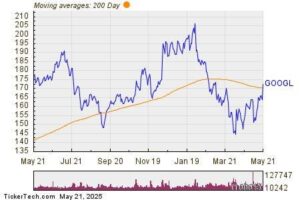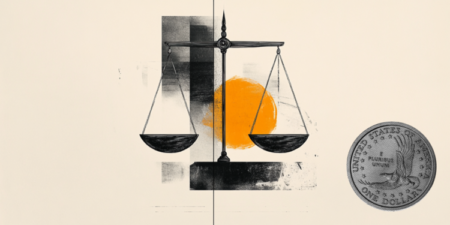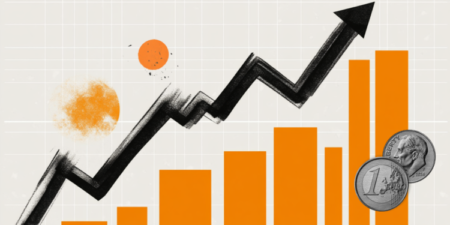- Gold price sees safe haven inflow on comments Israel considers striking Iran nuclear facilities.
- President Trump clashes with Republican members on his fiscal package plan through US Congress.
- Gold has broken out of its tight range and could see follow-through higher.
Gold (XAU/USD) edges higher on Wednesday towards $3,311 at the time of writing, with concerns that tensions in the Middle East might spiral out of control again and Trump’s fiscal bill not passing Congress. In late trading on Tuesday, CNN reported that Israel is considering targeting nuclear sites in Iran. While former United States (US) President Joe Biden was able to change Israel’s Prime Minister Benjamin Netanyahu’s mind, US President Donald Trump has seen his diplomatic efforts fall apart, with markets mulling whether Trump is still able to control Netanyahu.
In the US, President Trump is facing setbacks at home as well as the administration struggles to get enough support to pass through Congress its tax bil. Frustration arose for Trump at Capitol Hill when speaking with lawmakers who demanded to significantly boost the cap on the state and local tax (SALT) deduction.
Daily digest market movers: Iran and Congress in balance
- Safe-haven support for Gold was boosted by a CNN report that indicated Israel may be planning a strike on Iranian nuclear facilities. It remains unclear whether a final decision to carry out the attack was made, the report said. Markets will want to look for confirmation from either US or Israel’s leaders.
- On the back of the phone call between US President Trump and Russian President Vladimir Putin, the Vatican has proposed to host any event related to Ukraine-Russia peace talks.
- The Financial Times reports that US lawmakers are pressing Northern Ireland to approve an American-owned Gold mine potentially worth billions of pounds to the local economy, warning that delays to the project risk driving away foreign capital.
Gold Price Technical Analysis: Upside move
Recent headlines about the Middle East and the deadlock in the US Congress are another hit for President Trump and his credibility, and to a broader extent, the credibility of the US Dollar and the US economy. Gold benefits from uncertainty, and it could peak back above $3,350 should Israel confirm its plans.
On the upside, the R1 resistance at $3,324 is the first level to look out for as it aligns with the high of May 12. The R2 resistance at $3,354 follows not far behind the R1 and could open the door for a return to $3,431, which were the peaks of April 21 and May 6 and 7.
Some thick-layered support emerges on the downside in case Gold price declines. On the downside, the daily pivot comes in at $3,263. Next, there is a technical pivotal level at $3,245, and, just below, $3,231 as the intraday S1.
XAU/USD: Daily Chart
Central banks FAQs
Central Banks have a key mandate which is making sure that there is price stability in a country or region. Economies are constantly facing inflation or deflation when prices for certain goods and services are fluctuating. Constant rising prices for the same goods means inflation, constant lowered prices for the same goods means deflation. It is the task of the central bank to keep the demand in line by tweaking its policy rate. For the biggest central banks like the US Federal Reserve (Fed), the European Central Bank (ECB) or the Bank of England (BoE), the mandate is to keep inflation close to 2%.
A central bank has one important tool at its disposal to get inflation higher or lower, and that is by tweaking its benchmark policy rate, commonly known as interest rate. On pre-communicated moments, the central bank will issue a statement with its policy rate and provide additional reasoning on why it is either remaining or changing (cutting or hiking) it. Local banks will adjust their savings and lending rates accordingly, which in turn will make it either harder or easier for people to earn on their savings or for companies to take out loans and make investments in their businesses. When the central bank hikes interest rates substantially, this is called monetary tightening. When it is cutting its benchmark rate, it is called monetary easing.
A central bank is often politically independent. Members of the central bank policy board are passing through a series of panels and hearings before being appointed to a policy board seat. Each member in that board often has a certain conviction on how the central bank should control inflation and the subsequent monetary policy. Members that want a very loose monetary policy, with low rates and cheap lending, to boost the economy substantially while being content to see inflation slightly above 2%, are called ‘doves’. Members that rather want to see higher rates to reward savings and want to keep a lit on inflation at all time are called ‘hawks’ and will not rest until inflation is at or just below 2%.
Normally, there is a chairman or president who leads each meeting, needs to create a consensus between the hawks or doves and has his or her final say when it would come down to a vote split to avoid a 50-50 tie on whether the current policy should be adjusted. The chairman will deliver speeches which often can be followed live, where the current monetary stance and outlook is being communicated. A central bank will try to push forward its monetary policy without triggering violent swings in rates, equities, or its currency. All members of the central bank will channel their stance toward the markets in advance of a policy meeting event. A few days before a policy meeting takes place until the new policy has been communicated, members are forbidden to talk publicly. This is called the blackout period.
Read the full article here
















